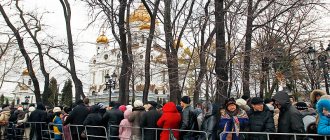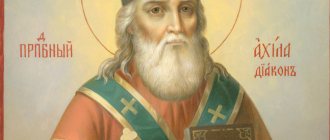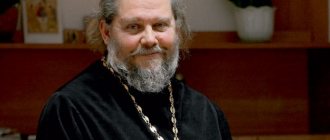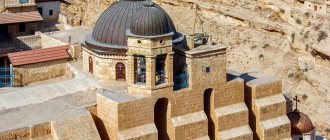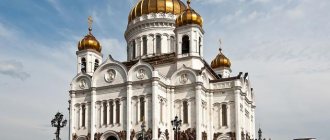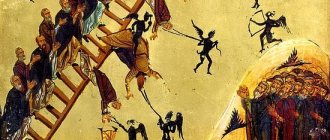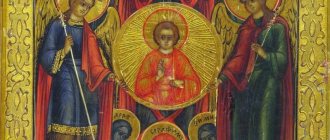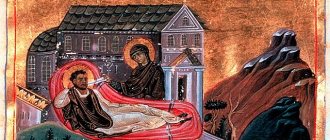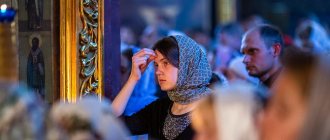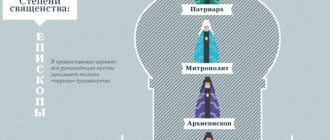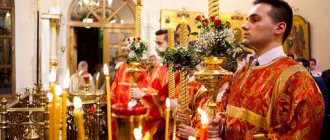In the May issue of Thomas, we began a conversation about the reunification of the Russian Orthodox Church and the Russian Orthodox Church Outside of Russia. Metropolitan Kirill of Smolensk and Kaliningrad answered the magazine’s questions.
The act of canonical communion was signed on May 17 of this year, after which Patriarch Alexy II of Moscow and All Rus' and First Hierarch of the ROCOR, Metropolitan Laurus, celebrated the Divine Liturgy together. We want to look at the unification of the Church through the eyes of the West, from Europe and America.
Our interlocutors are clergy from France, Germany and the USA, the meeting with whom was made possible thanks to the organization OLTR (Association for Local Orthodoxy of the Russian Tradition). We talk with them about the prospects that reunification opens up for the Russian Church and for the Orthodox mission. What do Western Orthodox people expect from this event? And from Russia? How do our views and expectations coincide? How do they differ? We raise these and other topics in conversations with our interlocutors. You need to understand that Russian Orthodoxy is not only Russian people. These are all those who, professing Orthodoxy, came to churches with the Russian tradition. Among them are many French, Germans, Americans, Belgians, Dutch... These people are very concerned about the question of whether the Russian Church, united, will be able to influence the Western world. The only people left outside this expectation are, perhaps, those for whom Orthodoxy is a way to be in eternal opposition—whether to the regime, to beliefs, or to something else.
There were no oppositionists among my three interlocutors. Each of them has his own view on the prospects for reunification, but none of them expressed indifference or alienation.
We met in Paris. All three meeting places were not far from each other, just over a ten-minute walk. One is in the Church of the Three Saints, in the courtyard of the Moscow Patriarchate, on Petel Street. The other is in the church of the Constantinople jurisdiction in honor of St. Seraphim of Sarov on Lekurbe Street. The third is in a small home hotel near the famous historical complex of the Invalides. Archbishop Mark, who heads the Berlin and German Diocese of the ROCOR, stayed in this modest hotel. Everything is so close... But by the standards of church history, we were separated by decades of living apart.
Russian Orthodox Church
abroad was formed as a result of the separation from the Church that remained on the territory of the USSR of some of those believers who went abroad. The Soviet government had a habit of harshly interfering in church affairs; relations between the two parts of the Russian Church either stalled or were renewed, but distrust of each other continued to grow. After the Declaration of Loyalty to Soviet Power, signed by the Russian Orthodox Church in 1927, the Russian Orthodox Church Abroad ceased relations with the Church in the USSR.
The situation began to change only after perestroika, when we openly started talking about the persecution of the Church in the 20s, 30s, 50s... But the main changes occurred after 2000, when the Russian Orthodox Church began the canonization of new martyrs and confessors of Russia, including the Tsarist family, many executed and exiled priests and laity. Based on this historical experience, the “Fundamentals of the Social Concept of the Russian Orthodox Church” declared the Church’s right to disobey state power if its beliefs contradict Christian values, and the impossibility of compromise with conscience in any form. Only then did fruitful negotiations about the possibility of reunification begin between the Russian Orthodox Church and the Russian Orthodox Church Abroad.
First look:
Against the stream
...We talked with Father Alexander, hieromonk, in the parish refectory of the Three Hierarchs' Metochion. I remember how I first came to this temple seven years ago. I was then amazed by its size: I never thought that a church could be located... in the lower floor of a residential building, in an ordinary city apartment. Everything is nearby: the Iveron Icon stands half a step from the Royal Doors, the roar of the street flies through the half-open window, the refectory and kitchen are almost adjacent to the altar... And I was also struck by the taste of the local prosphora. Incredibly large, freshly sweet, delicious, combining the traditions of Russian bakers and French bakeries. Since then, every time I prayed in this church, I tried to submit memorial notes on time in order to receive my prosphora and take it home: to give a try to everyone for whom a particle was taken out of it.
– Father Alexander, during the nine years of your life in Europe, you probably had to deal with different attitudes towards Orthodoxy. What do the West think about us?
– First of all, it should be noted that when here, especially in France, they talk about Orthodoxy, they often mean the Russian Church.
– Why not Greek, not Serbian, not Romanian?
– Firstly, because her flock is one of the largest. Secondly, because Russia has always had a very close connection with France. And thirdly, perhaps because Russian religious and philosophical thought turned out to be very close to Westerners in general and the French in particular. Here, even those people who do not particularly shine with knowledge in the field of literature and philosophy have at least heard about Khomyakov, Solovyov and Berdyaev, and sometimes even read them... And Dostoevsky is generally known to all the more or less self-respecting French.
In general, French Catholics show quite a great interest in the Orthodox tradition. It is important to them that we have preserved the veneration of icons, they carefully study our Liturgy... One might even say that they look with hope at Orthodoxy. This interest is clearly visible in the example of book publishing: literature about Orthodoxy is best distributed in Catholic circles.
There is another circle of interested parties – the university environment. True, here our tradition is viewed more as a museum exhibit than as a living heritage. But this also produces results. At the Sorbonne, for example, the Faculty of Slavic Studies publishes many articles and books on the history of Russian Orthodoxy: in the Kiev period, in Moscow, in St. Petersburg... The first Franco-Slavic dictionary of church terms was also published there.
– How do they view Orthodoxy in secular circles?
Unfortunately, it is ambiguous and more often bad than good. Le Monde, one of the most widely read and influential French magazines, systematically scolds and criticizes the Orthodox Church. True, they write the same thing about Catholics: the French secular press is very anti-church.
The Church, from the point of view of secular media, is overly conservative: it does not allow compromise on issues of “same-sex marriage”, considers abortion and euthanasia to be the murder of a person, condemns the use of embryonic cells for cosmetic purposes... In general, it does not show any “tolerance”.
– In Russia there is a lot of talk about the spiritual dying of the West. How fair is this?
– Currently in the West there are indeed a lot of people who are not looking for anything spiritual and do not ask “damned” questions. They are not that they are atheists or convinced anti-Christians, they are just people who don’t care why they exist, what will happen to them, what is the meaning of life... I think this is a consequence of the development of consumer society: a person’s life is completely secure, there are no unpleasant surprises in it , there is nothing left to fight for... Despite the fact that the French complain about the lack of a social system, France is a socially developed country: here anyone, even the unemployed, does not suffer from hunger, he has enough money to live, his material future is more or less secure ... He remembers spiritual life when he encounters some difficulties and finds himself in a state of discomfort. In the meantime, everything is fine, the person is in a semi-depressive state, in which it is difficult to motivate him to do anything. Often, in this case, all individuality is lost: in the printed press he learns what he needs to think, on television he is told how to react to what... There is no need to comprehend his future himself, to analyze events. The only choice he needs to make is to decide on the channel and press the desired button on the remote control, and then everything will be explained...
On the other hand, there are convinced atheists in Western society. There are few of them, but they actively express their opinions... And finally, there are people who are convinced believers, who, often as a result of a collision with a non-Christian environment, do not just go to church on Sundays in the hope of receiving consolation and support, but feel that they belong to the Church as a quality that radically distinguishes them from the rest: they become witnesses of their faith, active figures.
– And how many of these are active believers?
– No, there are few believers at all, and among them there are still many passive ones, for whom the temple is an organization where they can be provided with religious services. But those who are ready to do something understand that the future of Christianity depends, to a large extent, on them. These people are involved in missionary work, in parish life, they know that if they do nothing, their parish will disintegrate and the church will be closed. Each of them is aware of their personal responsibility. And this feeling is born precisely from the experience of daily communication with the external, non-Christian world, indifferent or hostile. They understand that if they come to the temple just to light a candle and then leave, then there will be no temple and no parish. Each such person makes his contribution to the life of the parish and its mission: someone works on an Internet site, someone publishes a newsletter or parish leaflet, someone organizes spiritual concerts, parish meetings... Any person who is ready to devote part of his When I arrive at the parish, I find something to do: distribute food to the homeless, tell children about Christ and the Holy Scriptures, go to hospitals... After all, there are very few priests here - both in the Catholic and Orthodox Churches, and without the participation of the laity - every layman - we cannot participate in parish life make do.
All this can be called missionary work, preaching Christianity to the world. But this sermon is very different from the one with which the apostles came to the people two thousand years ago. The disciples of Christ reported the news of the Resurrection of Christ to the pagan world. We are turning to a secularized world, which is sometimes called post-Christian. And our task is not to convey the Good News, which in general terms is well known to everyone here, but to “rehabilitate” it, to try to explain its importance for each individual person.
– Is it difficult to be a Christian in Europe?
- Difficult. Because a Christian always swims against the current. And, besides, if you are a Christian, completely different, much more stringent requirements are placed on you. According to the word of the Lord: You will be persecuted for My name’s sake, and you will be like sheep in the midst of wolves. After all, if you now declare yourself a Christian, you immediately - whether you are Orthodox or Catholic - begin to remember the Inquisition, connections with the state and all the mistakes that Christians have made over the two-thousand-year history of our faith. Secular media contribute to this in every possible way: the slightest erroneous step on the part of any representative of the Church becomes widely publicized. They present us with a different bill, they expect more from us, they ask more of us.
Hieromonk Alexander (Sinyakov)
born in the Stavropol region.
After finishing school, he lived for a year in the Ipatiev Monastery (Kostroma). Graduated from the Sorbonne and St. Sergius Theological Institute (Paris). He taught at the Sorbonne. In 2003 he took monastic vows. In 2004 he was ordained to the priesthood. In 2006, he was appointed secretary of the Korsun diocese (diocese of the Russian Orthodox Church in Western Europe) for public relations, press and religious organizations. Since 2002, member of the representative office of the Russian Orthodox Church in Brussels at European international organizations.
Second look:
The Russian and foreign press comments on the reunification of the Russian Church
TV channel Russia
The unity of the Russian Orthodox Church was achieved on May 17 at exactly 10 a.m., when Patriarch Alexy II and the First Hierarch of the Church Abroad, Metropolitan Laurus, signed the Act of Canonical Communion Russia TV Channel
Russian and foreign media today continue to comment on the signing of the Act on Canonical Communion of the two branches of the Russian Orthodox Church in Moscow the day before.
NG: Why did the reunion of the Russian Church take place right now?
The unity of the Russian Orthodox Church was achieved yesterday at exactly 10 a.m., when Patriarch Alexy II of Moscow and All Rus' and First Hierarch of the Church Abroad, Metropolitan Laurus, signed the Act of Canonical Communion. After this, Patriarch Alexy II led the Divine Liturgy, concelebrating with him was Metropolitan Laurus and other bishops of the Russian Orthodox Church of the Moscow Patriarchate (ROC MP) and the Russian Orthodox Church Outside of Russia (ROCOR).
In order to understand the sacred meaning of everything that happened in the Cathedral of Christ the Savior on May 17, you need to touch a little on history. Why did the reunion of the Russian Church take place right now? This question is posed in today's publication of Nezavisimaya Gazeta.
Attempts to “collect” it were also made in Soviet times. The Moscow Patriarchate has repeatedly (in 1945, 1974 and 1988) appealed to the Church Abroad with a call for unity. Without seeking an answer, the ROC MP sometimes took drastic steps, accusing the ROCOR of schismatics and isolation from the entire Orthodox world. In response, the “foreigners” continued to anathematize the Russian Orthodox Church MP.
When the Soviet period of Russian history ended, it would seem that all political obstacles to restoring the unity of the Russian Orthodox Church were removed. However, the ROCOR continued not to recognize the Moscow Patriarchate. In 1990, the Council of Bishops of the ROCOR in Jordanville (USA) decided to create dioceses and parishes of the Church Abroad on the territory of the USSR, parallel to the church structures of the ROC MP (according to the Act signed yesterday, the clergy of these dioceses within five years will have to become subordinate to the local bishops of the ROC MP ). In 2003, Patriarch Alexy II addressed the entire Russian Orthodox emigration with a message, proposing to unite “all dioceses, communities and monasteries of Russian origin and tradition” into one church structure. That same year, President Vladimir Putin met with Metropolitan Laurus in New York and conveyed to him an invitation from Alexy II to visit Russia.
It was the New York meeting and the subsequent visit of Metropolitan Laurus to Moscow in May 2004 that played a decisive role in the reconciliation of the two “branches” of Russian Orthodoxy. Foreign bishops, having seen with their own eyes the head of the Russian state, were convinced that secular power was no longer a persecutor of the Church. Putin became the “guarantor” of the negotiations that began in 2004 on the unification of the ROCOR and the ROC MP. Perhaps the fact that the president himself is an Orthodox believer also played a significant role.
Therefore, the presence of the President at the solemn signing of the Act on Canonical Communion and the first joint liturgy of the hierarchs of the Russian Orthodox Church MP and the Russian Orthodox Church Abroad is quite natural. We can say that Vladimir Putin has already secured the political image of a “unifier of the Church.” Similarly, in historical memory, Tsar Alexei Mikhailovich is associated with the church reforms of Patriarch Nikon, and Nicholas I is associated with an attempt to unite the Orthodox with the Greek Catholics (Uniates).
Before the “reunification of national significance,” such “little things” as the participation of the Russian Orthodox Church MP in the work of the World Council of Churches turned out to be unimportant. The IV All-Diaspora Council of 2006 actually called on the Russian Orthodox Church MP to leave the ecumenical movement, which unites various Christian denominations. However, the Moscow Patriarchate did not make such concessions, hinting that this would weaken the position of the Russian Orthodox Church in the Christian world and secure the place of leadership for the Patriarchate of Constantinople, which is actively involved in the ecumenical movement. The issue of ecumenism was never clearly resolved during the work of the joint commissions, however, both the ROC MP and the ROCOR stated that they would “continue discussions.” In the meantime, for an indefinite period after the signing of the Act on Canonical Communion, the united Russian Orthodox Church found itself in the position of a “centaur” in relation to the ecumenical movement, when one part of it is ready to communicate with Catholics and Protestants, while the other is not.
Russian Orthodox Church Outside of Russia
The Russian Orthodox Church Outside of Russia (ROCOR) unites about 500 thousand followers in more than 30 countries. The largest number of them live in the USA, Germany, Canada, Australia and France. There are a total of 454 parishes, united in 16 dioceses.
ROCOR does not participate in the interchurch ecumenical movement and is not a member of the World Council of Churches.
The schism in the Russian Orthodox Church and its overcoming
1921 – formation of the Karlovac Synod. 1927 – declaration of the deputy locum tenens of the patriarchal throne, Metropolitan Sergius (Stragorodsky) of loyalty to the Soviet government. ROCOR refuses to recognize her. 1943 – Local Council of the Russian Orthodox Church MP. Election of Metropolitan Sergius as Patriarch. 1945, 1974, 1988 – The Russian Orthodox Church MP appeals to the Russian Orthodox Church Abroad with calls to recognize him. 1990 – ROCOR decision to open “parallel” dioceses in Russia. 1995 – the first joint commission of the Russian Orthodox Church MP and the Russian Orthodox Church Abroad. 2001 – election of Metropolitan Laurus (Shkurla), a supporter of reunification with the Moscow Patriarchate, as head of the ROCOR. 2003 – meeting of Vladimir Putin with Metropolitan Laurus. Appeal of Patriarch Alexy II to Russian emigration. 2004 – Metropolitan Laurus’s first visit to Moscow. 2006 – The IV All-Diaspora Council approves the Act on Canonical Communion, but asks the ROC MP to withdraw from the World Council of Churches. 2007 – signing of the Act of Canonical Communion. Restoring the unity of the Russian Orthodox Church
.
Time: Thanks to the reunification of the Russian Orthodox Church, Putin strengthens Russia's role in world Orthodoxy
Revolution and regicide, confrontation between the communist regime and capitalism, almost a century of mutual sharp attacks and hatred - all this contributed to the split in the Russian Orthodox Church into two branches. But on May 17, the split was officially put to an end in Moscow, the American magazine Time notes today (full text on the website Inopressa.ru).
Thousands of people of the Russian Orthodox faith - including several hundred who traveled from New York - stood in line in the pouring rain to enter Moscow's Cathedral of Christ the Savior. There they witnessed the resumption of “canonical communion” between the Moscow Patriarchate, or Russian Orthodox Church (ROC), which, by its own estimates, unites more than 70 million believers, and the Russian Orthodox Church Abroad (ROCOR), headquartered in New York, which, believed to include 1.5 million parishioners. Many priests and laity shed tears at this hour, which ended the 86-year schism caused by the Bolshevik Revolution of 1917 and subsequent events: the assassination of the dethroned Tsar, the forced emigration of hundreds of thousands of Russians defeated in the Civil War. Of course, the magnificent ceremony was imbued with piety and deeply felt, but at the same time, the reunion of the Churches has political resonance, since the Russian Orthodox Church is increasingly becoming a symbol and projection of the ideas of Russian nationalism.
It is symptomatic that the head of the Russian Orthodox Church, Patriarch Alexy, began his speech not with gratitude to the Lord God, but with warm words about Russian President Vladimir Putin. The Patriarch emphasized that reunification could only happen due to the fact that the ROCOR sees in Putin a true Orthodox Russian person. Putin, in his response speech, noted that the reunification of churches is an event of truly national significance.
Nationalism, based on Orthodoxy, appears as the main ideological resource of the Putin regime. The May 17 ceremony capped Putin's four-year effort since September 2003 to help the Moscow Patriarchate absorb its rival American cousin and turn the new global Church into the state's main ideological offshoot and a valuable foreign policy instrument. At his February press conference, Putin equated Russia’s “traditional faiths” in importance to its nuclear shield, saying that both the former and the latter are elements that strengthen Russian statehood and create the necessary preconditions for the country’s external and internal security. Professor Sergei Filatov, one of the leading experts on religious issues in Russia, euphemistically refers to the Russian Orthodox Church.
The Russian Orthodox Church is occupying an increasingly prominent place in the life of society and is asserting itself more confidently, while the separation of Church and state is not very pronounced. The Moscow City Court and the General Prosecutor's Office have Orthodox chapels in their administrative buildings. Only Orthodox clergy have the right to spiritually care for believers in the armed forces. In some regions, teaching the basics of Orthodoxy is included in the school curriculum, and students serve in churches. When Orthodox fundamentalists destroyed an art exhibition at the Moscow Andrei Sakharov Center, regarding it as “an insult to the main religion of our country,” a Moscow court found the Center’s leaders guilty of insulting the feelings of believers and fined each of them $3,500. The Russian Orthodox Church achieved censorship changes in the opera based on the plot of the famous fairy tale by the poet Alexander Pushkin, so that the main character, the priest, disappeared from the opera. During a visit to an Orthodox monastery in January 2004, Putin noted that although the church is, of course, separated from the state, in the soul of the people they are together. The strengthening of the Church, which is a manifestation of undisguised contempt for the secular principles of the Constitution, can only strengthen the split in Russia, a multi-ethnic and multi-religious country.
The American clergy of the ROCOR assures that it retains administrative independence and the right to dispose of its parishes, although it recognizes the Moscow Patriarchate as its head. According to Filatov, the ROCOR “has as much independence as the Eastern European “people's democracies” had in the socialist camp.” What the new union will really entail will become clear, for example, in the Holy Land, where the ROCOR has its own religious buildings, over the ownership of which it has already had clashes with the Moscow Patriarchate in the past. For example, in 1997, Yasser Arafat forcibly transferred the only Christian church in Hebron, which belonged to the ROCOR, to the Russian Orthodox Church. (At the site of this church, as the Bible says, three angels appeared to Abraham). The Church Abroad still retains one of the most famous churches in Jerusalem - the Church of St. Mary Magdalene with seven golden onion domes and a pseudo-Russian facade, which rises on the slopes of the Mount of Olives just above the Garden of Gethsemane. ROCOR also owns the monastery on the top of Mount Olive, another monastery founded in the 3rd century. a hermit in the desert region of Judea, as well as churches in Jericho and on the Jordan River. According to the “Act of Canonical Communion”, the administrative subordination of these objects will not change. But some observers view such assurances with skepticism.
Thanks to the reunification of the Russian Orthodox Church, Putin is strengthening Russia's role in world Orthodoxy. Traditionally, the primacy among the Orthodox Churches of the world belongs to the Patriarchate of Constantinople, but it is only “first among equals.” His status cannot be compared with the Vatican's supreme authority over the Roman Catholic Church in the world. Orthodox are the Churches of Greece, Cyprus, Ukraine, Belarus and several Balkan states, as well as Georgia, Armenia and Moldova. The Russian Orthodox Church has historically always insisted on its leading position among all these national Churches and, apparently, will return to this position. Putin’s new reunited Church will also conduct further expansion into the United States and Western European countries, trying to use the connections and parishes of the ROCOR in order to become a conductor of the policy of Russian nationalism no less than Russian piety.
Kommersant: How the Russian Orthodox Church and the Russian Orthodox Church Abroad were divided and united
The division of the Russian Church occurred after the locum tenens of the patriarchal throne, Metropolitan Sergius (Stragorodsky), issued the so-called Declaration of Loyalty in 1927. The essence of the document was that the church in any case must remain loyal to the current government. The foreign part of the church refused to submit to the Bolsheviks.
After the fall of Soviet power, the Moscow Patriarchate began to call on the Church Abroad to unite. However, the ROCOR hierarchs invariably refused, continuing to reproach the ROC for the sin of Sergianism. Only after the canonization of the royal family killed by the Bolsheviks in 1918 and the adoption by the Council of Bishops of the Moscow Patriarchate in 2000 of the social concept of the Russian Orthodox Church, which directly states that “if the government forces Orthodox believers to apostatize from Christ and His Church, as well as to sinful, spiritually harmful acts “The Church must refuse to obey the state,” the ROCOR admitted that Sergianism in Russia has de facto ceased to exist. The dialogue became possible also because the irreconcilable opponent of reunification, First Hierarch of the ROCOR Vitaly (Ustinov), retired, and Metropolitan Laurus took his place, as noted in today’s Kommersant publication.
In 2003, Russian President Vladimir Putin visited Metropolitan Laurus in New York and conveyed to him an invitation from Patriarch Alexy II to visit Russia. The head of a foreign church flew to Moscow in May 2004, where the first meeting of the two first hierarchs in the history of the schism took place. Conciliation commissions were created to overcome disagreements. The parties managed to bring together their positions on fundamental issues: the relationship of the church to the authorities (the relationship between the church and the state should be of a partnership nature) and the attitude towards Protestants and Catholics (it is possible to participate in joint social and charitable programs). The parties also renounced mutual property claims.
Kommersant: What types of Russian Orthodox churches are there?
Russian Orthodox Church (Moscow Patriarchate)
traces its history back to the Baptism of Rus' in 988. Unites 136 dioceses (more than 26.6 thousand parishes) mainly in Russia and the CIS. The number of parishioners, according to various estimates, is 90-110 million people. The head of the Russian Orthodox Church is Patriarch Alexy II.
Many movements that escaped the control of the Moscow Patriarchate in the 1920s received the collective name True Orthodox (Catacomb) churches.
There are “Sekachevskaya”, “Andreevskaya”, “Gennadievskaya”, “Isakievskaya” (based on the names of the founders) and other branches.
The Russian Autocephalous True Orthodox Church, the True Orthodox Church, the Apostolic Orthodox Church, and the Russian Orthodox Autonomous Church are
classified as catacomb churches Russian Orthodox Church Outside of Russia
created on September 2, 1922 in Yugoslavia by bishops who left Russia. In 1927, it stopped relations with Russia “due to its enslavement by the godless Soviet government.” Unites 16 dioceses (400 parishes) in 40 countries, the number of parishioners is 100-500 thousand. The Synod is located in New York. The head is Metropolitan Laurus.
In the 1990s, a number of organizations separated from the ROCOR, dissatisfied with the rapprochement with the ROC, the largest of which became the Russian Orthodox Church in Exile
Metropolitan Vitaly. After his death in 2006, the church split into several groups.
Russian Orthodox Old Believer Church
established in the Belokrinitsky monastery (Romania) in 1846 by the “priests” (recognized the continuity of priests of the new rite).
According to some estimates, the church serves about 1 million people. The head of the Russian part of the church is Metropolitan Cornelius of Moscow and All Rus'. In 1923, the Russian Old Orthodox Church
, the basis of which was the “Beglopopovtsy” who did not accept the Belokrinitsky hierarchy.
The department of their Patriarch Alexander is located in Moscow. The second branch of the Old Believers - the “bespopovtsy” - is most numerously represented by the Ancient Orthodox Pomeranian Church.
In Russia it has more than 200 communities numbering up to several thousand people and about 212 communities abroad.
In addition, in Ukraine, in addition to the Ukrainian Orthodox Church of the Moscow Patriarchate
(part of the Russian Orthodox Church, claims 35 million parishioners)
the Kiev Patriarchate
and
the Ukrainian Autocephalous Orthodox Church
.
Kommersant: What is stopping you from uniting?
Alexander Antonov, representative of the Russian Orthodox Old Believer Church:
– Our disagreements are canonical and dogmatic. They appeared several centuries ago. In 1551, at the Council of the Stoglavy, led by Ivan the Terrible, it was decided that those who do not cross themselves with two fingers will be cursed. Now these contradictions remain, so our unification is still far away. But we are for good neighborly relations.
Georgy Petrenko, archpriest, clergyman of the South American Diocese of the ROCOR:
- It's premature. Most parishes in Australia, Canada, and South America believe that due to the unification, canonical rules and foundations are being violated. We don’t like that the leadership of the ROCOR suddenly stopped believing that there is no communism in Russia. In addition, we have never considered the Moscow Patriarchate to be the mother of the Russian Orthodox Church. Moreover, the Russian Orthodox Church and Patriarch Alexy, a government appointee, never apologized for the persecution. Our churches may unite, but not so quickly.
Metropolitan Valentin of Suzdal and Vladimir, head of the Russian Orthodox Autonomous Church:
– Due to lack of repentance and failure to correct mistakes. Patriarch Tikhon, who lived during the revolution, left a decree that if different churches arise for political reasons, they must be governed independently. And when the time of troubles has passed, it is necessary to convene a council, at which each of the churches will listen to the claims and then correct them. But this was not the case. And Laurus got into debt, and they threatened him that if he did not unite, it would be bad for him.
Gleb Yakunin, priest of the Apostolic Orthodox Church:
– Unification always leads to totalitarianism. Churches can be ideologically different, for example liberal. Spiritual unity does not mean administrative unity. And this unification comes from above, from the president. But a schism in ROCOR will not be expected for long. There is talk that one of the priests has been recruited, and trials will begin for churches and property.
Tadeusz Kondrusiewicz, Metropolitan, Archbishop of the Archdiocese of the Mother of God in Moscow, head of Russian Catholics:
– The unity of the Churches is the work of the Holy Spirit, and we are just instruments. All Orthodox Christians were waiting for the unification of the Russian Orthodox Church and the Russian Orthodox Church Abroad, because Christ said: “Let them all be one.” This association will contribute to the development of dialogue between us. It is easier for the Orthodox to unite than for the Christian world. They were separated for 90 years, not a thousand. The first steps towards unification were taken by John Paul II, Benedict XVI continues this course.
Russian time
On the way to Rue Lecourbes I kept asking how to get there. But no matter who I turned to, even to 100% French people (who are easy to recognize by their appearance and manner of speaking), everyone unmistakably showed me where to go. Although I asked not about the street, but about an Orthodox church... I expected to see a church, albeit not large, but clearly out of the general Parisian style - with a dome and steps at the western entrance. How else can one explain that ordinary French people know well about him? Imagine my surprise when I stopped in front of a sign on the door of the entrance of an ordinary residential building: “Russian Orthodox Church in honor of St. Seraphim of Sarov.” True, this time the door did not lead to the apartment, but to the sun-pierced courtyard, to the unlocked gate of the church fence. The temple turned out to be a small one-story wooden house, above which rose a blue onion dome with a cross.
Father Nikolai was already waiting for me at the entrance.
– I think that in the West it is easy to be Orthodox. Easier than someone else. Orthodoxy gives joy, order in life, and shapes a worldview. This, unfortunately, is often lacking in our lives. In Russia, many people believe that in the West people live well, without problems. This is not entirely true. There is also a lot of instability in our society, including social instability: many are unemployed, many receive insufficient salaries, some people have fear of life. Of course, this is not noticeable on the Champs Elysees and other rich quarters of Paris. But if you get up early and go down to the subway at seven in the morning, you will see a lot of tired, confused people there, and you will hardly think that they live very comfortably. But this is not the most important thing... I think the main internal problem in the West is that man has lost his spiritual balance, faith, awareness of the presence of God in his life. Basically, Western Europeans have already moved away from Christianity. There was a very strong secularization of society.
I know of many cases when it is in our worship, our iconography and theology that Western people seek spiritual experience. Why do future students of the St. Sergius Institute decide to receive theological education? What pushes them to take this step? What is missing in life? Not all of them will later become priests or work in the field of spiritual knowledge. This means that they simply need such studies for themselves... For example, we have one student, an Orthodox French woman, who is simultaneously studying at the Faculty of Medicine. She is preparing to become a surgeon and believes that for this she needs a two-pronged education: medical and spiritual. And the profession of a doctor for her is, first of all, love and service to one’s neighbor.
Of course, in Christian circles hopes are pinned on Russia. Russia can really help the Western world. But to do this, you first need to return to your faith, and this is very difficult if the tradition has been interrupted. But we look with hope at the reunification of the Russian Orthodox Church and the Russian Orthodox Church Abroad, which, it seems to me, will help strengthen the Orthodox tradition in Russia - on the one hand, and on the other - will help the West look at your country more objectively.
Archpriest Nikolai CHERNOKRAK
is the rector of the Church of St. Seraphim of Sarov in Paris (exarchate of the Patriarchate of Constantinople). Born in the former Yugoslavia, into a Serbian family, he has lived in Paris for more than 35 years. Professor at the St. Sergius Theological Institute (from which he graduated), teaches the New Testament and ascetic theology. Married; mother, Ekaterina Mikhailovna – Russian, from the descendants of the first emigration. The family has two children.
